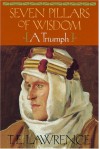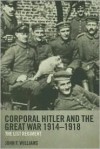Currently reading
'FIRST IN THE BLUE'

Although the 57th Fighter Group was one of the less known fighter units in the U.S. Army Air Force (USAAF) to see combat during the Second World War, it played a significant role in the development and refinement of fighter-bomber tactics that continue to be used by fighter units in the U.S. Air Force (USAF) today.
Seven months after the U.S. entry into the Second World War, the 57th Fighter Group --- then equipped with P-40 fighters --- was sent abroad to North Africa aboard the U.S. Navy aircraft carrier, the Ranger. Upon arrival in Egypt and Palestine (via a circuitous flight route extending from the Gold Coast to Northeast Africa and the Middle East), its 3 squadrons (the 64th, 65th, and 66th Fighter Squadrons) were integrated into some of the veteran combat units of Britain's Desert Air Force (DAF), where they learned first-hand the reality of air/ground combat. The 57th would later go on to take part - with the DAF - in the Battle of El Alamein in October 1942. Several pilots within the 57th Fighter Group by the time of the Anglo-American victory over Italo-German forces in North Africa the following May would qualify as 'aces' from the numerous aerial battles the unit waged against both the Luftwaffe and the Regia Aeronautica.
As the war in the Mediterranean continued into Sicily and Italy, the 57th Fighter Group acquired a reputation as a top-notch fighter-bomber unit, first with the P-40 and by the end of 1943 with the vastly superior and redoubtable P-47 Thunderbolt, which it flew on operations through V-E Day.
Osprey has again produced a first rate book about an outstanding combat unit that hitherto had been little known. The reader is treated to diary extracts and personal interviews the author had with former unit personnel (pilots and ground crew alike). There are also lots of illustrations and photos of 57th Fighter Group aircraft (several of them in original Technicolor). I highly recommend "57th Fighter Group: First in the Blue" to any military history enthusiast or any reader with a cursory interest in the Second World War.
 2
2













